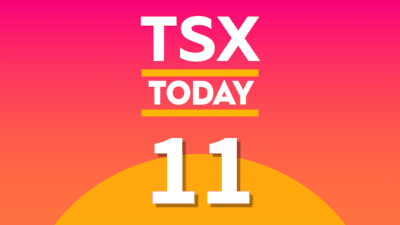Exchange-traded funds (ETFs) are baskets of stocks that tend to track the performance of a particular sector or investment theme. These instruments are convenient ways for investors to diversify their Tax-Free Savings Accounts (TFSAs) or bet on an emerging trend without picking individual stocks.
However, most of these ETFs are created with a bias towards optimism. They track the market value of the underlying stocks, which means their performance suffers when economic conditions change and the stock market crashes. That’s left a gap for bearish investors.
A slew of innovative new ETFs is trying to bridge that gap by allowing investors to bet against the market instead of on it. These so-called inverse ETFs are designed to hold short positions in prominent stocks and deliver the exact opposite return of their performance.
Take Horizons BetaPro S&P/TSX 60 Inverse ETF (TSX:HIX) for example; it aims to deliver a -100% return of the daily performance of the S&P/TSX 60™ Index.
The market price of this inverse ETF grew roughly 14% between 2015 and 2016, as the S&P/TSX 60 index declined by roughly 20%. That’s what it is designed to do.
At the moment, the ETF’s largest holdings include short positions in the country’s largest publicly listed companies, including Royal Bank of Canada, Toronto-Dominion Bank, and Canadian National Railway. This means investors can hedge their portfolio against a sudden plunge in the value of these mega corporations through HIX.
Similarly, Canadian investors can also bet against the American stock market through Horizons BetaPro S&P 500 Inverse ETF or bet on a leveraged-ETF that returns twice the negative return in any index. For experienced investors, these tools could add tremendous value, so long as they’re aware of the pitfalls of this innovative strategy.
Potential perils
As far as I can tell, inverse ETFs are designed to provide a short-term hedge against market volatility rather than serve a long-term need for investors.
The most obvious downside to these inverse ETFs is that they’re expensive. The management fee on the Horizons S&P/TSX 60 Inverse is 1.15% plus taxes. Investors should also note that the TSX 60’s dividend yield adds to the expense of holding this inverse ETF long term.
Theoretically, the TSX 60 inverse ETF should also underperform long term because the stock market tends to appreciate in value over time. The TSX 60 has more than doubled since the financial crisis of 2009, for example, while the value of the HIX is down by half over that same period.
By adding leverage, some of these inverse ETFs magnify the risks even further.
In my opinion, inverse ETFs should serve as tools to extract a profit when the market swings down over the course of a day or week, rather than serve as a permanent part of your TFSA or RRSP portfolio. If you’re looking to preserve capital during extended downturns, there are better options such as gold or consumer staples.
Foolish takeaway
Inverse ETFs are interesting tools for bearish traders and pessimistic investors looking to gain from the market’s volatility. However, these instruments are designed for short-term bets against the market rather than long-term hedges.







